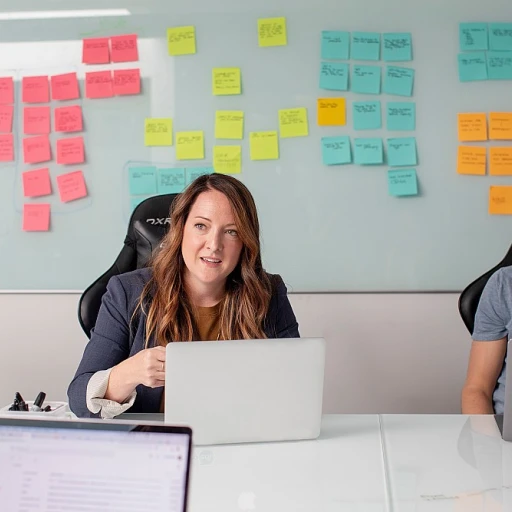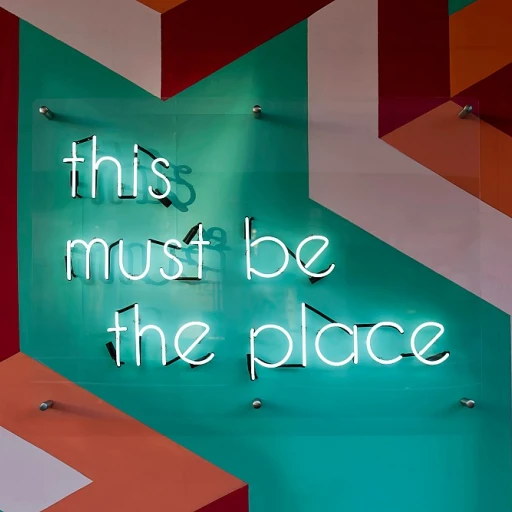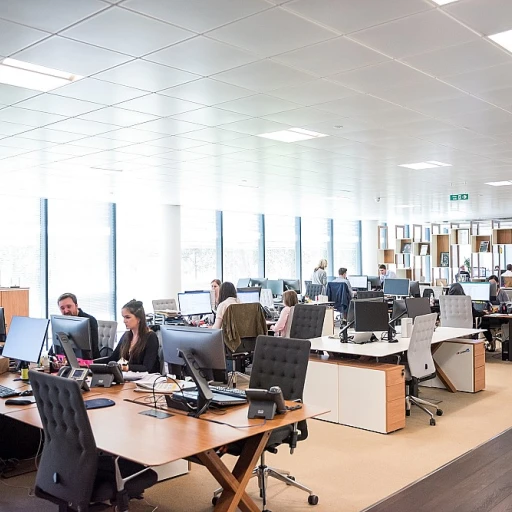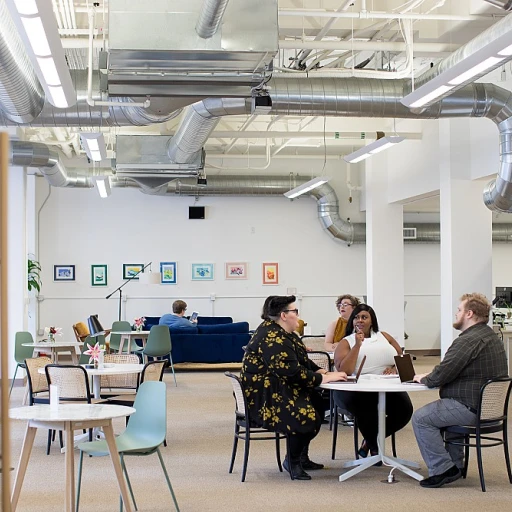
Understanding the Skills Gap
Defining the Skills Gap in Today's Workforce
The term 'skills gap' often surfaces in discussions about workforce development, yet its meaning can sometimes be elusive. At its core, the skills gap refers to the disparity between the skills that employers need and the skills that employees or job seekers possess. This gap can manifest in various forms, from technical abilities to soft skills, and it poses significant challenges for both businesses and workers.
In the current work environment, rapid technological advancements and evolving business needs have intensified the skills gap. Organizations are struggling to find qualified candidates who can meet the demands of modern job roles. This issue is not just a short-term hurdle but a long-term concern that affects workforce planning and development strategies.
Why the Skills Gap Matters
The skills gap has far-reaching implications for the global workforce. It affects not only the efficiency and productivity of businesses but also the job satisfaction and career development of employees. When workers lack the necessary skills, it can lead to a negative impact on employee morale and engagement. Moreover, it hampers the ability of organizations to innovate and remain competitive in their respective industries.
For employees, the skills gap can limit career growth and job opportunities. Without access to adequate training programs and professional development resources, workers may find themselves stuck in roles that do not fully utilize their potential. This scenario underscores the importance of continuous learning and development in bridging the skills gap.
Addressing the Skills Gap
To effectively tackle the skills gap, businesses and educational institutions must collaborate on creating comprehensive training and education programs. Workforce development initiatives should focus on equipping employees with the skills needed for current and future job markets. This includes fostering a culture of employee learning and development within organizations.
Moreover, embracing diversity in the workforce can bring varied perspectives and skills, enhancing team dynamics and problem-solving capabilities. Organizations should also consider flexible HR solutions to adapt to the changing needs of the workforce. For more insights on this approach, explore the benefits of flexible HR solutions.
Economic Implications of the Skills Gap
Economic Implications and the Need for Adaptive Strategies
The skills gap is not just a localized issue—it poses significant economic challenges on a broader scale. As the workforce evolves, the disparity in skills required versus skills currently possessed by employees can lead to a decrease in productivity, impacting overall business performance. Organizations that fail to actively address this gap may struggle to meet strategic objectives, resulting in reduced competitiveness. Moreover, the gap becomes more pronounced as businesses continue to undergo digital transformation. Companies require their teams to possess advanced skills, yet the workforce's proficiency may not align with these demands. This mismatch in skills leads to higher training costs while businesses scramble to bridge the gap through various means of employee training and workforce development initiatives. Below are some of the macroeconomic implications arising from the skills gap:- Reduced Economic Growth: The lack of adequately trained staff can impede innovation and long-term development, stalling economic progress.
- Increased Unemployment: As businesses seek specific skill sets, workers without the required skills might face unemployment or underemployment.
- Higher Operational Costs: Organizations may incur costs related to hiring, retraining, and integrating new technologies, putting financial strain on planning and resource management.
- Impact on Global Workforce: Countries experiencing acute skills gaps face challenges on a global scale, affecting their ability to compete internationally.
Training and Education Challenges
Challenges in Workforce Training and Education
The skills gap presents substantial challenges in the realm of workforce training and education. Organizations face a critical task in ensuring their training programs align with the evolving demands of the global workforce. This involves a deep understanding of the specific skills required for current and future jobs, many of which are subject to rapid change due to technological advancements and shifts in industry practices. Firstly, effective workforce development requires a comprehensive workforce planning strategy that takes into account the need for both short-term and long-term employee training. However, organizations often struggle with resource management in implementing such strategies. The lack of sufficient funding and infrastructure can lead to a negative impact on the effectiveness of training programs. Moreover, one of the pressing issues is the diversity in learning needs among employees. Tailoring training programs to suit different levels of experience and expertise within teams can be a daunting task. This is especially true in diverse work environments where workers come with varied backgrounds and professional development goals. Training employees in line with the latest technological advancements demands collaboration with community colleges and other educational institutions to enhance job training initiatives. However, this often presents challenges in aligning academic programs with the practical needs of businesses.It is essential for businesses to enhance employee engagement via strategic HR management to foster an environment where continuous learning is prioritized. By doing so, companies can promote a culture of learning that motivates staff and aligns with both organizational goals and employee aspirations. Furthermore, the rise of gig workers adds another layer of complexity to workforce development. These workers often require flexible training solutions that can easily adapt to their dynamic work schedules. Organizations must innovate and invest in developing frameworks that cater to these non-traditional employment setups. Ultimately, addressing the challenges in training and education demands a proactive approach from all stakeholders. It is imperative for businesses to prioritize career development and job satisfaction by continuously updating and evolving their training programs to fit the needs of a changing workforce.
Impact on Employee Morale and Career Growth
Effects on Employee Sentiment and Professional Advancement
The skills gap presents unique challenges, not only for organizations but also for the employees themselves. One of the most insightful observations is the profound impact of the skills gap on worker morale and career progression. For many in the workforce, the realization that their skill set may not meet the current demands of the business world can be more than just discouraging—it can be a roadblock to their professional development.
Low employee engagement and job satisfaction are often tied to a workforce that feels underprepared and undervalued. Workers who perceive themselves as lacking the necessary skills may experience decreased motivation, affecting overall productivity and work environment conditions. Furthermore, this negative impact can lead to increased turnover, as employees might seek new job opportunities elsewhere when feeling stuck in their current roles.
Career development is another area significantly influenced by the skills gap. With organizations constantly seeking to adapt through strategic workforce planning, opportunities for advancement can be limited for those not equipped with the skills organizations are looking to develop. As a result, employees may find themselves sidelined, which impacts their long-term career growth and professional aspirations.
The challenges extend beyond immediate job training to encompass long-term career planning. For instance, without the necessary support and resources, employees might struggle to make the transition from short-term learning initiatives to sustainable skill development. Here, management plays a critical role in identifying and addressing these challenges across diverse teams.
Employers can leverage diverse training programs and embrace workforce development initiatives not just as a means of filling immediate gaps but as a strategy for empowering their staff. The emphasis should be on creating a supportive employee learning atmosphere that encourages continuous growth, promoting benefits such as enhanced job satisfaction and worker loyalty.
Ultimately, closing the skills gap requires a strategic effort that aligns organizational goals with employee needs, fostering a culture of learning and innovation.
Employer Strategies and Limitations
Employer Approaches to Addressing Skills Gaps
Organizations are increasingly aware of the skills gap affecting their workforce and are taking various approaches to mitigate its impact. However, these strategies come with their own set of challenges and limitations. Here’s a look at some common employer strategies:
- Employee Training and Development: Many businesses are investing in training programs to upskill their current employees. This approach not only helps in bridging the skills gap but also enhances job satisfaction and employee engagement. However, the effectiveness of these programs often depends on the quality of training and the willingness of employees to participate actively.
- Workforce Planning: Effective workforce planning is crucial for identifying future skills needs and preparing accordingly. This involves strategic resource management and aligning training initiatives with long-term business goals. Yet, predicting future skills requirements can be challenging due to the rapidly changing work environment.
- Diversity and Inclusion: Promoting diversity within teams can bring a variety of skills and perspectives, which is beneficial for innovation and problem-solving. However, achieving true diversity requires commitment and continuous effort from management.
- Collaboration with Educational Institutions: Partnering with community colleges and universities can help organizations tailor job training programs to meet specific industry needs. While this collaboration can be beneficial, it often requires significant planning and coordination.
- Adapting to the Gig Economy: Some organizations are leveraging gig workers to fill immediate skills gaps. This approach provides short-term flexibility but may not contribute to long-term workforce development.
While these strategies offer potential benefits, they also highlight the limitations employers face in addressing the skills gap. Balancing short-term needs with long-term workforce development goals remains a significant challenge. Employers must continually adapt their strategies to ensure they are effectively supporting their employees' career development and the organization's growth.
Future Outlook and Solutions
Embracing Change and Progress in Workforce Development
The skills gap is a dynamic issue that demands continuous monitoring and response. Organizations can benefit significantly by adopting innovative strategies aimed at nurturing a well-rounded workforce ready to face future challenges.- Investing in Comprehensive Training Programs: A key element in bridging the skills gap is developing comprehensive training programs that address both technical skills and soft skills. Continual learning opportunities, such as employee training and professional development workshops, are essential for fostering a versatile and adaptable workforce.
- Encouraging a Culture of Lifelong Learning: Instilling a culture of lifelong learning among employees can enhance job satisfaction and reduce negative impact on employee morale. Establishing clear pathways for career development encourages workers to engage in new training and learning opportunities, thereby supporting long-term workforce planning.
- Leveraging Technology: Technology has transformed how organizations deliver training and conduct workforce development. Implementing digital tools for remote and online learning makes it easier for organizations to reach a diverse, global workforce. This approach can improve access to resources and support better employee management.
- Focusing on Diversity and Inclusion: Diversity in workforce planning brings different perspectives and ideas, fostering an environment conducive to innovation and progress. By valuing a diverse range of voices, organizations can effectively address a variety of skills and talents needed in an evolving job market.
- Building Collaborations: Partnerships with community colleges, training organizations, and other educational institutions can aid in closing the skills gap. These collaborations can provide organizations with a steady pipeline of skilled workers who are ready for job training and development.












